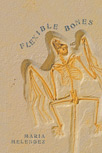Sapo Dorado—A Recent Extinction
One thousand day-glo toads appeared in a handful of muddy seeps
that spring, los machos stretching their tiny orange suits
in a clamber to get at las hembras, who lay like glistening yellow
buddhas of the mud. No one knew the toad count from all
the Monteverde mountain-puddles together, but you just missed them.
A few years back, a couple cloud-forest kilometers higher,
you almost could've touched them. They were just here.
Back through a little drizzle and fizz of time, you'll find a writhing "toad ball," ten
males throwing their two-inch selves all over
a female's softball-sized back, slapping and shoving each other,
wanting to live, as much as they want the next guy
to get nailed by a bird. Don't be fooled by the females'
sanguine refusal to rouse themselves, their sedentary meditation
amidst the frenzy. They want to live, too. They spool this want
through their perfect insides, globe it to tan and black pearls,
sphere it out to the fates. They've made enough spawn,
so their natural histories say, for each clutch to withstand
depredation and still live on. Squirt-and-go parenting's
no less urgent than what passes, in our case, for nurture, mind you—
if the Maker had ordained teacher conferencing and soccer game
snack rotations for Bufo species, they'd carefully mark
calendars, insist their little ones practice goal-kicks,
and they'd read aloud twenty minutes each night to support
the tadpoles' fluency. But such is not their strategy.
After a blazing crossfire of the sexes, the golden toads
plowed back into mud. The next green season eleven
came out, the year after, only one. Stretch your fingers into
the drifting mist and you'll almost touch him, the last
sapo dorado, spotted a little ways higher, a year or two back.
(Sugar House Review; Poetry Daily)


